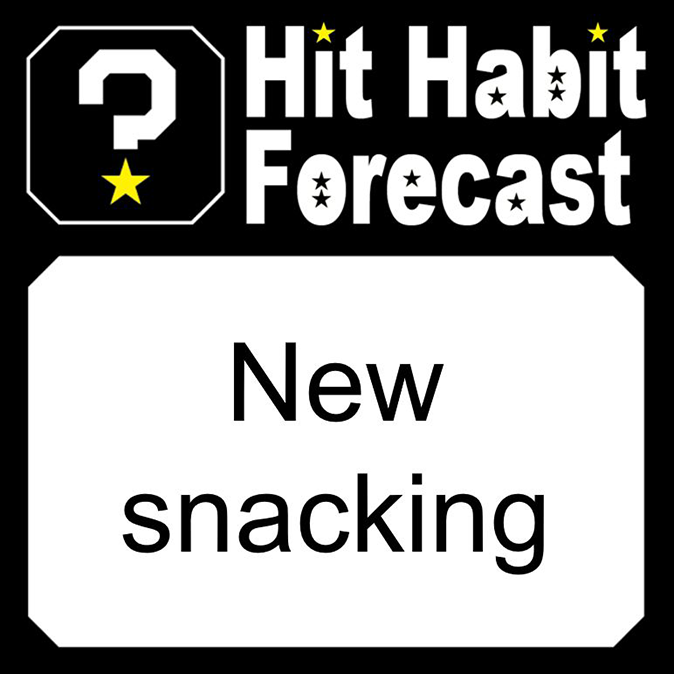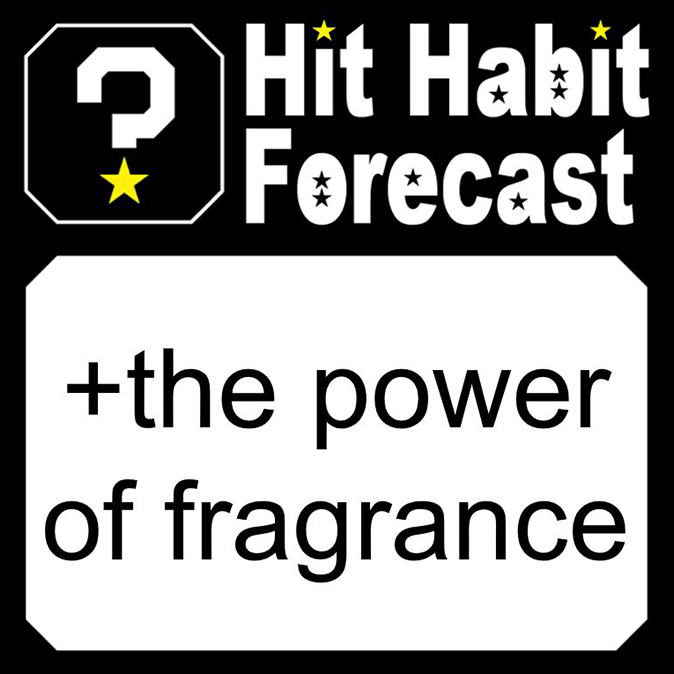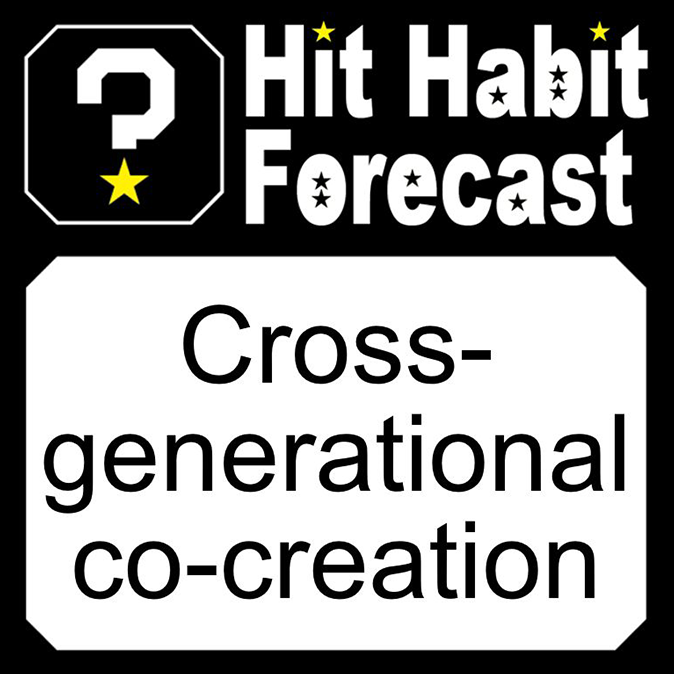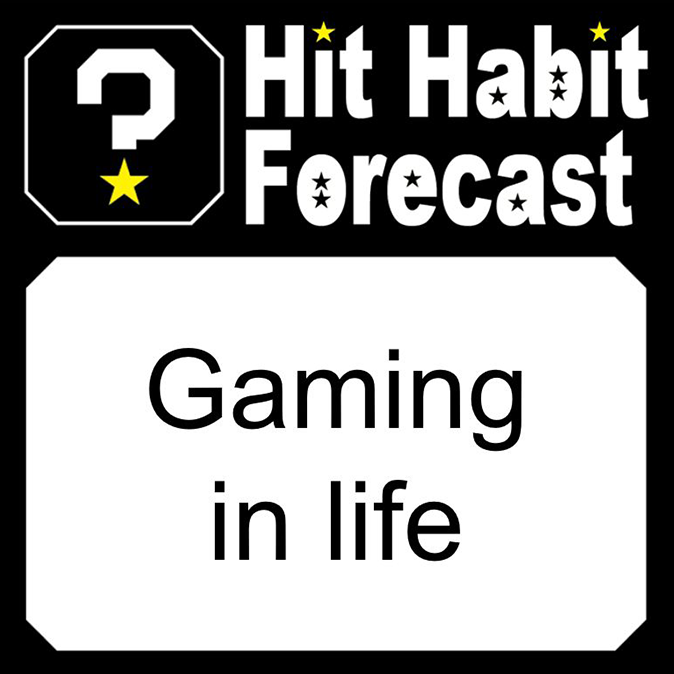- Viewpoints
Hit Habit Forecast is a regular column of the Hit Habit Makers, a group of young planners at Hakuhodo HQ that gamely stood up to say they were going to create hit habits—not hit products—as consumption shifts from purchasing things to purchasing experiences. Analyzing social media accounts and purchasing data of highly sophisticated users and conducting analysis on popular articles, etc. in a variety of media that have their fingers on the pulse of social trends, this is the bold, new challenge of forecasting hit habits that are about to break.

Hello. I’m Koji Suzuki of the Hit Habit Makers.
During this last year of staying at home, I have taken care to cover positive habits in my columns, such as “Stay-home debuts,” “Life on the terrace” and “Shoku-ju ryotoku.” But as we approach a full year of pandemic restrictions, I have to say that I’ve grown a bit tired of it recently.
The Hit Habit Makers meet regularly once a week and discuss signs of emerging habits while sharing where we’re currently at. Lately, it feels like a few of us are talking about being a bit tired and looking for comfort and healing. (Our “+the power of fragrance” column discusses a method that Daichi Nagai uses to deal with such stresses.)
I’d therefore like to discuss “digital mindfulness,” the new habit of leveraging digital technology to maintain your inner peace in the current situation. Until recently, “mindfulness” had strong connotations of detoxing from digital, or temporarily removing yourself from the constant stream of information from digital devices and the internet. But in these days when going out just for the sake of it isn’t possible, practicing mindfulness through the clever use of digital devices is a very 2021 habit.
Is it true that, like me, many are a bit tired recently? And is it true that the behaviors people are turning to maintain their inner peace are increasing? It is this that I delve into in this article.
Firstly, “quarantine fatigue” peaked in April last year, but has increased from time to time since then, and we can see that this fatigue has built up gradually over time. Meanwhile, searches for “maindofurunesu” (mindfulness) have been increasing in the past 12 months, so we can discern a relationship between the buildup of quarantine fatigue and increased interest in mindfulness.
Searches for “jishuku tsukare” (quarantine fatigue)
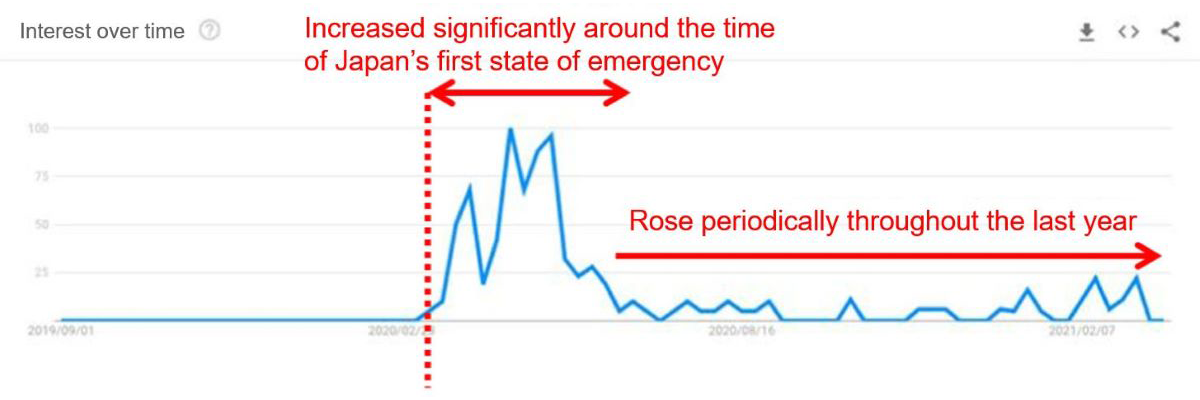 Source: Google Trends
Source: Google TrendsSearches for “maindofurunesu” (mindfulness)
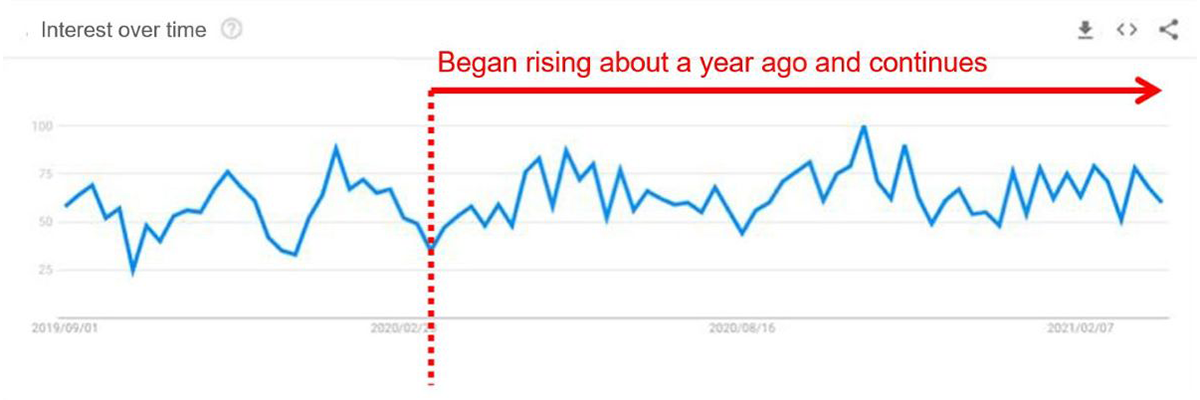 Source: Google Trends
Source: Google TrendsGiven the above, I’d like to introduce several examples of “digital mindfulness”—mindfulness using digital technology—that I’ve discovered.
First, meditation apps.
These are apps that assist with meditating, gently guiding users by explaining meditation positions and breathing rhythms in a calming voice. With some taking just five minutes per day, they are easy, and I recommend them for those of you looking for a simple entry into digital mindfulness.
Second, we have journaling apps.
Intended as a means of making sense of your feelings by writing them down, journaling is sometimes referred to as “written meditation.” Taking stock of your feelings by writing them down can certainly bring inner peace. But a special feature of digital journaling is that these apps have built-in AI that automatically analyzes what you write and gives you feedback, which gives them a counseling function, too.
Finally, one that I’m keeping an eye on myself: the “priest app.”
This is a social media app that you can type your everyday worries and pent-up feelings in to. While it’s a social media app, there is no communication between users, so it’s a stress-free space where aggression and flaming seldom occur. But the best thing about this app is that practicing Buddhist priests read and respond to users’ posts. Just getting things off your chest is effective enough, but being able to get advice from a priest must solve people’s issues in a flash.
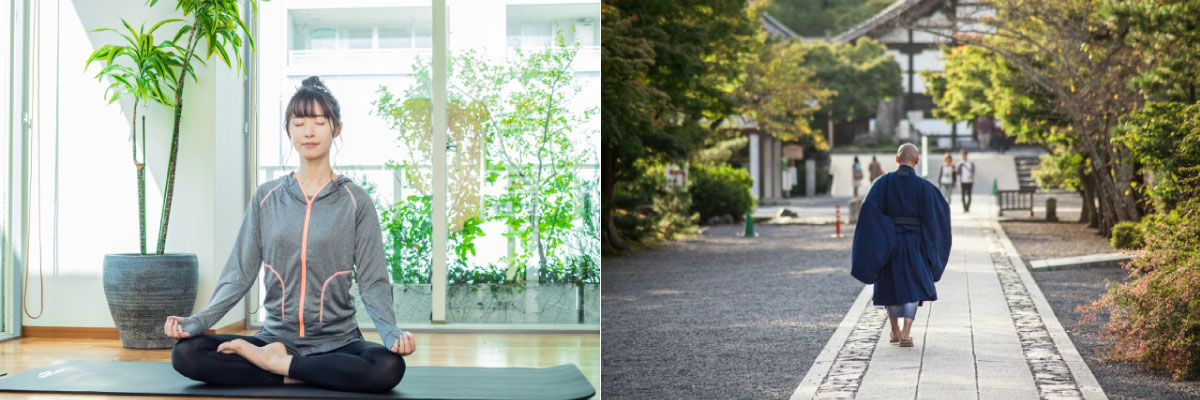
So much for the various digital mindfulness options. Since this nervy COVID-19 lifestyle looks set to continue for some time, demand for digital mindfulness is likely to continue to grow. And this could potentially lead to new business opportunities.
Examples of digital mindfulness business opportunities
■ An app that gives guidance on the “movement medicine” known as “dancing meditation”
■ An app that supports “mindful eating,” or paying attention to your food and eating slowly. The app could explain the food you are about to eat and give advice about how to pace your meal
■ A mindfulness app for employees intended to improve employee efficiency and satisfaction now that working from home has become entrenched
And so on.
As an aside, my wife uses a meditation app and says that she feels more in control of her emotions and positive on the days that she meditates (which makes me want to give it a go myself). At this time, when we tend to go overboard a bit due to the start of the financial year and other things, why not incorporate digital mindfulness into your everyday life to stop yourself from overdoing it?

Integrated Planning & Creative Division
Hakuhodo Inc.













